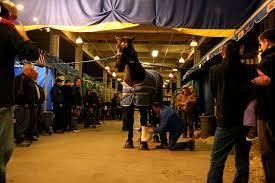Teaching English in Peru is an exciting opportunity for anyone who is looking to expand their teaching career and immerse themselves in a new culture. Not only will you have the chance to teach English to eager students but you’ll also have the chance to explore one of the most culturally rich countries in Latin America. However, the process can quickly become overwhelming if you’re not familiar with Peru’s system of education. To help prepare you, we’ve created a comprehensive guide that covers the important aspects of Teach English in Peru.
First and foremost, it’s important to have the proper qualifications to teach English in Peru. A Bachelor’s degree in any field is preferred, but for some programs, a CELTA or TEFL certificate may suffice. Fluency in English is required and knowledge of Spanish is a benefit. Once you’ve determined if you meet the minimum requirements, you’ll need to obtain a work visa to legally work in Peru. The process can be a bit complicated, so it’s best to consult with a legal advisor.
Next, you’ll need to decide what type of teaching role you’d like to pursue. Peru has many opportunities available, from working in public schools to private institutions and language centers. Private institutions typically offer a higher salary, but require a strict set of qualifications. Language centers offer a more flexible schedule, making it a great option for part-time teachers or those with other obligations. Public schools offer the opportunity to work with young students, but the salary can vary depending on the region. Always do your research to determine which teaching role will best fit your qualifications and desired lifestyle.
It’s also important to be familiar with the local customs and culture of Peru. For example, punctuality is not commonly practiced in Peru, so don’t be alarmed if your colleagues and students are running a bit behind schedule. It’s also common for people to be very friendly and approachable, so building rapport with students and colleagues is essential to establishing a presence within the school community. Additionally, dressing in professional attire is highly valued in Peru, so be sure to dress appropriately for your teaching role.
Understanding the education system in Peru is key to a successful teaching experience. The academic year typically runs from March to December, but this can vary depending on the region and school. Student attendance can also be inconsistent, so it’s important to consider alternative teaching methods to ensure the students are still learning. Although the education system in Peru is improving, resources can still be scarce, so teachers must be resourceful in their teaching approach. It’s also important to understand that there are cultural differences in the approach to education and discipline, so being flexible and adaptable is key to connecting with students and becoming an effective teacher.
Finally, living in Peru can be an enriching experience as long as you are aware of the basic necessities of day-to-day life. It’s important to take time to adjust to the new culture and lifestyle and take care of your personal well-being. Living expenses in Peru are relatively low compared to other countries, which can make it a great option for those looking to save money. It’s also important to research the different regions of Peru and determine which one will best suit your lifestyle. Lima, the capital city, is the most popular location for English teachers but other regions such as Arequipa, Cusco, and Piura offer unique experiences as well.
Conclusion:
Teaching English in Peru is a unique opportunity to immerse yourself in a vibrant culture while pursuing a fulfilling career. While it can be complex and overwhelming at times, with the proper qualifications, knowledge of the education system and Peruvian culture, and an open mind, teaching English in Peru can be a life-changing experience. By taking the time to research and prepare yourself, you can ensure that your time in Peru is not only a great professional opportunity, but also a personal journey of growth and discovery.





+ There are no comments
Add yours